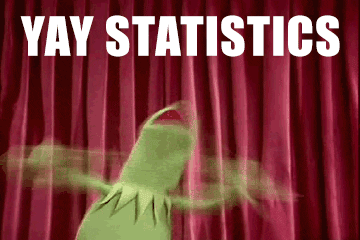According to LinkedIn’s Emerging Jobs on the Rise report for 2021, data scientist roles are still growing steadily, showing an average annual growth of 35%. As they occupy one of the most multifaceted (and in demand) roles in the data science, machine learning, and AI space, there are some clear skills that most data scientists possess — a general understanding of the industries and businesses they are working across (i.e., key challenges, top use cases), strong communication skills in order to tell a compelling story through data, and a broad knowledge of algorithms in order to select the right one and know which features to adjust to best feed the model.
Not every data scientist, though, has a statistics background or has been trained up on the most popular statistics and probability concepts to ultimately know which ones can be used when. Not only can familiarizing themselves with statistics help data scientists be more efficient at their job, but it offers additional benefits such as:
- More deeply informing their understanding of new ML concepts
- Flagging when they may have encountered an error before it snowballs into bigger problems in the future
- Encouraging them to shift their mindset and approach to each data science project
- Save time by testing a new method for tackling the same business problem, which may allow you to skip over unnecessary trial and error
- Improving their model performance
While data science and statistics are indeed highly related, they are separate entities that can be leveraged in unison by using data to draw observations and conclusions about the world. For example, data scientists (and their clients) will often say they have a lot of data, but aren’t sure which questions to answer or where to start to extract value from the data. Statistics can help set the foundation for identifying patterns and insights.

Dataiku Reduces the Learning Curve
With Dataiku DSS, data scientists (even those without a statistics background) can perform advanced statistical analysis in a worksheet-and-cards format while collaborating with the wider data or analytics team. This worksheet provides a dedicated interface for EDA tasks, allowing data scientists to:
- Summarize or describe data samples (i.e., using univariate analysis, bivariate analysis, distribution & curve fitting, and correlation matrices). This falls under descriptive statistics.
- Draw conclusions from a sample dataset about an underlying population (i.e., through hypothesis testing). This falls under inferential statistics.
- Visualize the structure of the dataset in a reduced number of dimensions, using principal component analysis (PCA). This falls under dimensionality reduction.
While the feature is immensely beneficial to those with statistics knowledge, it’s not exclusive. The dedicated UI for advanced statistical analysis allows statistics to be visualized by everyone which, in turn, expedites the process of uncovering insights from the dataset and eliminates bottlenecks in AI project development. Check out the feature in action below:





